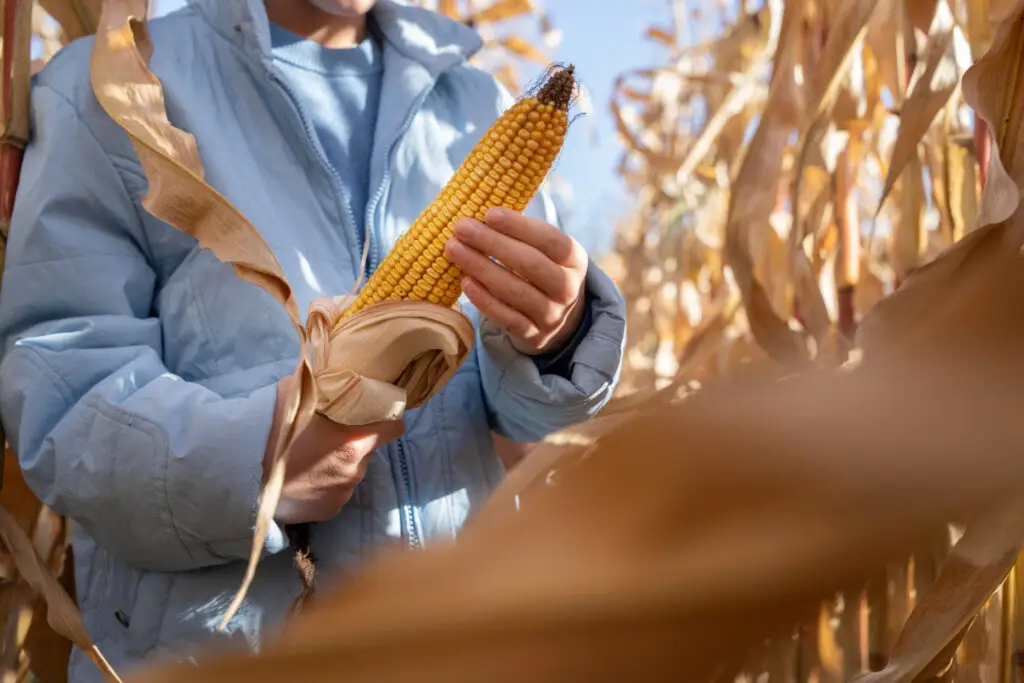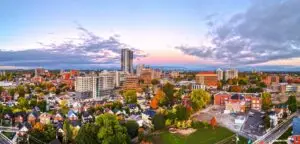Agtech is changing farming in exciting ways by using smart digital tools and machines to solve old problems. Farmers today face higher costs, fewer workers, and more pressure to farm in ways that protect the environment. To handle these challenges, more farms are using agtech than ever before. At the center of this change is farming software, which helps farmers make better decisions—from using AI to watch crops closely to using blockchain to track food from the farm to your table. New tools like precision farming, smart watering systems, and automated machines make farming easier and more efficient. Technology is also helping with indoor farms, caring for animals, and running greenhouses. What used to be a bonus is now a must—technology is the future of farming, helping farmers grow more food while taking care of the Earth.
Climate Pressure and Resource Limits Demand New Solutions
Climate change, resource scarcity, and rising food demand are accelerating the shift toward tech-enabled agriculture. By 2050, food production must grow by 70% to feed nearly 10 billion people—mainly in developing countries. Environmental instability and economic stress demand smarter agriculture practices powered by advanced digital technologies. Several urgent challenges are accelerating this transformation:
- Extreme Climate Conditions. Weather unpredictability, rising temperatures, and more frequent droughts threaten crop stability. Precision agricultural software helps adapt planting schedules and manage field inputs based on real-time data.
- Soil Degradation and Water Scarcity. Over one-third of farmland suffers from degradation, and water resources are becoming limited. Crop management software allows efficient use of fertilizers and irrigation, improving yields with fewer resources.
- Labor Shortages and Rising Costs. The agriculture sector faces high input prices and reduced labor availability. Smart farming software reduces manual monitoring through automation and remote sensing tools.
- Food Security Challenges. With food demand set to rise sharply, production must increase without expanding farmland. Agriculture software solutions support scalable operations, enabling precision, automation, and efficiency across the supply chain.
- Inefficient Traditional Monitoring. Farmers spend 70% of their time on crop observation rather than direct action. Precision agriculture tools and AI reduce this burden, turning data into actionable insights quickly.
Tech on the Rise: Satellite Data, AI, and Automation in the Field
Modern farming relies on accuracy and quick decisions. Using agriculture software and digital tools, farmers now use satellites, sensors, and robots to watch over and care for their crops faster and smarter than ever before.
Precision Tools and Satellite Insights
Satellite images are now a powerful helper for farmers, showing how healthy the soil is, spotting stressed crops, and tracking moisture across fields. Using GPS and precision agriculture software, farmers can apply water, fertilizer, and pesticides only where they’re really needed. This smart targeting cuts down on waste, saves money, and boosts the quality of the crops.
Smart Machinery and Full Automation
Farm machines have come a long way—they’re now smart and can work on their own. Modern tractors and harvesters use GPS, machine learning, and auto-steering to do jobs like plowing, planting, and harvesting with little help from people. These machines work well in tough weather and rough fields, help solve labor shortages, and reduce the need for chemicals.
Drones and Aerial Imaging
Drones have become must-have tools on farms today. Equipped with high-resolution and infrared cameras, they provide detailed aerial views of crops, spotting pests, diseases, and water needs early on. Combined with agriculture mapping software, drones give farmers a full picture of their land. This lets them act fast and stop problems before they get worse.

From Fields to Food Chains: The Future of Global Agriculture
Emerging practices like carbon farming, regenerative agriculture, and digital traceability are shaping the future of climate-resilient farming.
Carbon Farming: Agriculture as a Climate Solution
Carbon farming positions agriculture as a powerful solution to climate change. By capturing atmospheric CO₂ through photosynthesis and storing it in soils and plants, farmers turn their land into carbon sinks. This method includes cover cropping, reduced tillage, and agroforestry—practices already common in organic systems. Supported by precision agriculture tools, farmers can monitor carbon levels and participate in carbon credit markets, gaining both environmental and economic value.
Regenerative Agriculture: Restoring What’s Lost
Regenerative agriculture goes beyond sustainability by focusing on restoring degraded soils. According to the FAO, we may lose all topsoil within 60 years if current degradation continues unchecked. Regenerative practices—such as composting, rotational grazing, and minimal tillage—improve soil structure, increase microbial diversity, and rebuild organic matter. Digital farming solutions now track these improvements, helping farms meet environmental benchmarks while enhancing long-term productivity.
Digital Traceability and Data Integrity
As consumers demand transparency, traceability in food production becomes essential. Agriculture software products now log every stage of the farming process—from planting to packaging. Blockchain-integrated systems enhance data accuracy and protect records from tampering. Crop planning software and agriculture management software provide proof of sustainable input use, helping producers meet certification standards and consumer expectations.
Looking Ahead
Smart farming software and agriculture mapping software are not just optimizing operations—they’re building resilience. As climate pressures grow, these innovations offer farmers a sustainable path forward, from soil restoration to global food security.















